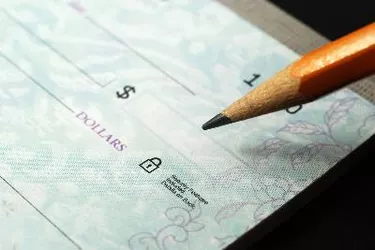
In addition to the financial difficulties of paying off overdue loans, bad credit can make it difficult for a borrower to develop any type of positive credit history. Once deemed a credit risk, many lenders and banks avoid transactions with customers with a history of bad credit. Secured financial services such as checking accounts – sometimes called second-chance accounts – allow customers with poor credit access to a checking account.
Secured Checking Basics
Video of the Day
Where traditional checking accounts give customers access to all the funds in their account, a secured checking account requires a portion of the money used to open it to be held in reserve. Similar to a security deposit when renting a property, the bank holds these funds in a separate savings account on the chance the account holder receives an overdraft fee or other penalty for a returned check. If the account holder doesn't repay the fee to the bank, it holds a portion of the security deposit when the account is closed.
Video of the Day
Security Amount
Although security deposits vary by bank and may also vary by the account holder's credit risk, many banks require secured checking account holders to contribute $200 as a security deposit. These funds cannot be directly accessed by the account holder until the account matures into a traditional checking account or the account is closed. For example, if a customer initially places $500 into a secured checking account with a $200 deposit, his checking balance will only reflect $300. After demonstrating proper checking history, the $200 will be refunded into the checking account.
Secured Checking vs. Overdraft Protection
Secured checking accounts often don't come with overdraft protection that's common among traditional checking accounts. Because of this, if an account holder writes a check that draws on funds not present in his account, the bank returns the check to the payee, as secured deposits aren't used to cover overdrafts. If the account holder closes the checking account with a negative balance caused by overdraft fees, the bank uses the secured balance to pay outstanding fees and other penalties.
Rebuilding Credit
Customers who must open a secured checking account rather than a traditional one should quickly begin repairing their credit in order to receive full checking privileges and have access to all the funds in their account. Customers should repay any outstanding balances and fees on previously held checking accounts to begin to clear their debt. Once all checking accounts have been adequately closed at a zero balance, the account holder should request the bank notify ChexSystems with information about the cleared debt. Account holders should request a free report from ChexSystems to verify that outstanding checking account debts have been removed from their record.